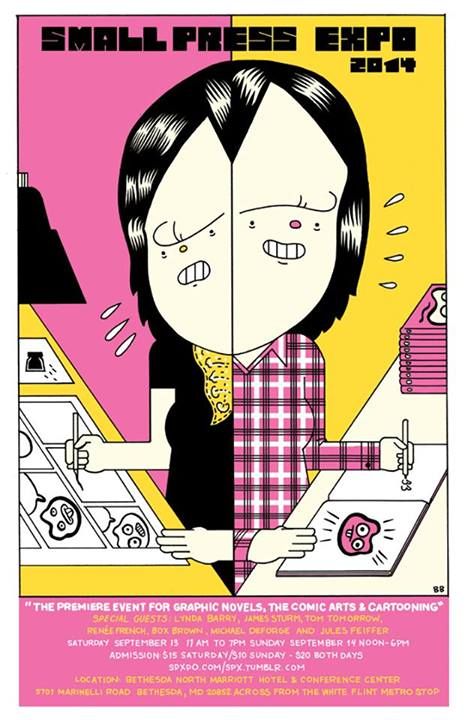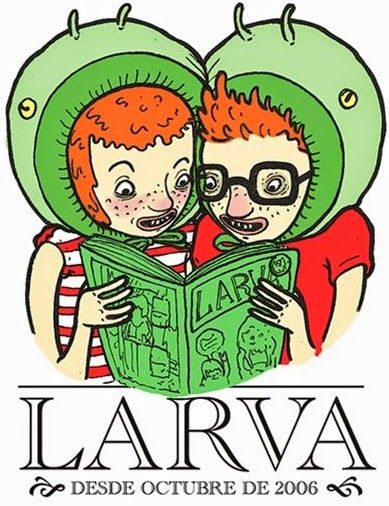Small Press Expo, that magical indie-comics festival that takes place each autumn in Bethesda, Maryland, is upon us once again. The show is traditionally thronged with noteworthy cartoonists and graphic novels, and this year proves no different, with folks like Emily Carroll, Jules Feiffer, Renee French, Lynda Barry, Charles Burns, Raina Telgemeier and Brandon Graham scheduled to attend.
While the Marriott Bethesda North Hotel isn't a labyrinthine structure that requires mapmaking skills to traverse, if this is your first time at the show, or if it's been awhile since you last attended, you might be looking for some helpful advice on how to navigate it. Here then are six suggestions on how to get the most out of your SPX experience.
1. Get there early. The first thing you can expect to see when you enter the hotel is a long entrance line that snakes around the hallway. While it tends to move (somewhat) quickly, if you're not a fan of standing in line I'd recommend getting there early. Or at least preparing yourself to spend some downtime waiting for your turn (which, honestly, you're going to do if you want to get a book signed by, say, Jules Feiffer).
2. Make your way through the entire room at least once. The show expanded considerably last year, and thus the number of tables and people selling wares can be dizzying to take in, at least on first entry. You can jump around if you like, but I think it's worthwhile to start at one corner of the room and then snake your way through each of the aisles to get a full appreciation for the works available. Feel free to stop and chat or pick up something while circumnavigating, but definitely try to explore.
3. Go outside your comfort zone. SPX provides a wonderful opportunity to find comics that cross all sorts of genres and international date lines. Take a chance on something that doesn't look like something you'd normally buy. Get a book that's not in English. Pick up that small, avant-garde mini you saw people raving about on Twitter. Rob Clough has a very good list of creators and publishers to visit. My own recommendations? I'd definitely check out the Amok table, the Studygroup folks, anything by Michael DeForge, Andrea Tsurumi's new Pool mini, Ed Luce, Youth in Decline, Josh Bayer's great new comic Theth, and so on.
4. Check out at least one panel. And if you have time, make it two or more. Bill Kartalopoulos does a fabulous job organizing the programming for SPX, and chances are there's at least one session you'll want to check out. If you want suggestions, the "Sex Humor & Grotesque" panel looks interesting, as does the Jules Feiffer Q&A and the Eleanor Davis presentation. Hell, it all looks good.
5. Budget your time and money. This is the tough one. There are lots of great things to see and buy at the show, not to mention the chance to hobnob with artists, old friends, bloggers and people you occasionally converse with on social media. You don't necessarily have to walk in with a detailed list of what you want to buy and how you plan on spending each hour, but it's a good idea to know when certain events are happening ahead of time and how long you hope to stay, as well as having a running idea in your head of how much you can afford to spend. Pace yourself accordingly, but also forgive yourself when you go over budget or lose track of the time. 'Cause you will.
6. Get out of the hotel. Especially if you're staying overnight. SPX is in such an isolated location -- at least compared to some other cons -- that it can feel like an island unto itself at times (you'll see references to "summer camp" thrown around a lot when people talk about the show). Thus, it's not a bad idea to head down to Bethesda or hop on the subway (conveniently located near the hotel) into Washington, D.C., to get dinner or take in an art gallery show, movie or what have you. Consider it a palate-cleansing before diving back into the sequential arts blizzard.



